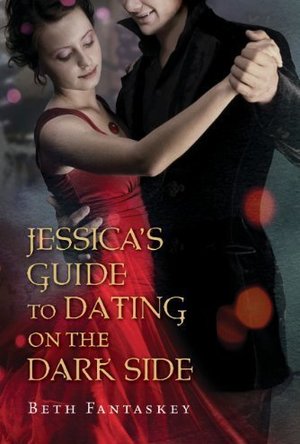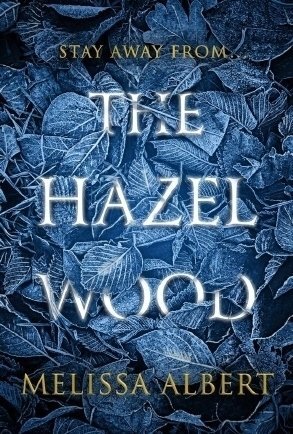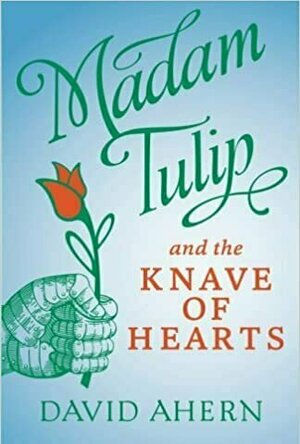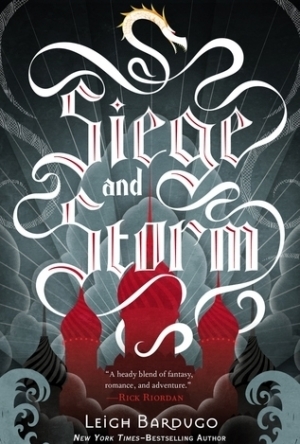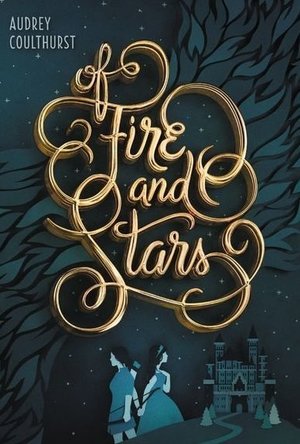Search
Search results
Haley Mathiot (9 KP) rated Jessica's Guide to Dating on the Dark Side (Jessica, #1) in Books
Apr 27, 2018
Jessica’s Guide to Dating on the Dark Side by Beth Fantaskey
Genre: YA Paranormal romance
ISBN: 9780547259406
Pub date: January 18th 2010 by Graphia (first published in hardback on February 1st 2009)
Rating: 5
Jessica was sure she was just your average teenager… until an ultra-hot European foreign exchange student shows up at school, stalks her, and then follows her home, insisting that they are both vampire royalty and must be married when she turns eighteen to ensure peace between their families… and Jessica is sure that Lucius, no matter how attractive, is absolutely insane. She manages to free herself of his grip… and then realizes that he’s all she ever wanted in the first place. But getting him back before he destroys her –or himself—will be quite a challenge. But Jessica is up to it. She has to be.
I absolutely loved Jessica’s Guide. It was funny, romantic, and entertaining the whole way through. I don’t know why I put off reading it so long.
The plot had great pacing, great twists, and great conflict. At one point I was tempted to flip to the end of the book just to make sure it all worked out at the end… because I wasn’t sure I could handle it if it didn’t.
I loved how Jessica’s and Lucius’s relationship wasn’t perfect. I saw this in Fantaskey’s other novel, Jekel Loves Hyde. Like Jill and Tristen, Jessica and Lucius certainly had their ups and downs… may I say more of the latter than the first. I dispise happyland syndrome in romances… and was pleased to find none whatsoever in Jessica’s Guide. Their romance was destiny and fate, the only question was how they’d get there in the end. And it was quite a rollercoaster. Their love was based on character more than actions, something that is sometimes hard to write well, and many authors fail miserably, but Fantaskey did a great job. For both Jessica and Lucius, there can never be anyone else.
The characters were great. I officially adore Lucius… passionate and mysterious and infuriating…we need more heroes like him… and Jessica was the kind of girl who would work hard for what she wanted, and sacrifice anything. I think we need more heroines like her, too! Jessica’s parents were both annoying and funny… I especially loved her mom.
The writing was fluid and descriptive, and easy to read. I demolished this one in about four hours.
Heart-pounding plot, characters to die for, and an epic romance, this one begs many re-reads.
Content/recommendation: some language, no sex. Ages 14+. This one is a perfect summer-read… or anytime read, really.
Genre: YA Paranormal romance
ISBN: 9780547259406
Pub date: January 18th 2010 by Graphia (first published in hardback on February 1st 2009)
Rating: 5
Jessica was sure she was just your average teenager… until an ultra-hot European foreign exchange student shows up at school, stalks her, and then follows her home, insisting that they are both vampire royalty and must be married when she turns eighteen to ensure peace between their families… and Jessica is sure that Lucius, no matter how attractive, is absolutely insane. She manages to free herself of his grip… and then realizes that he’s all she ever wanted in the first place. But getting him back before he destroys her –or himself—will be quite a challenge. But Jessica is up to it. She has to be.
I absolutely loved Jessica’s Guide. It was funny, romantic, and entertaining the whole way through. I don’t know why I put off reading it so long.
The plot had great pacing, great twists, and great conflict. At one point I was tempted to flip to the end of the book just to make sure it all worked out at the end… because I wasn’t sure I could handle it if it didn’t.
I loved how Jessica’s and Lucius’s relationship wasn’t perfect. I saw this in Fantaskey’s other novel, Jekel Loves Hyde. Like Jill and Tristen, Jessica and Lucius certainly had their ups and downs… may I say more of the latter than the first. I dispise happyland syndrome in romances… and was pleased to find none whatsoever in Jessica’s Guide. Their romance was destiny and fate, the only question was how they’d get there in the end. And it was quite a rollercoaster. Their love was based on character more than actions, something that is sometimes hard to write well, and many authors fail miserably, but Fantaskey did a great job. For both Jessica and Lucius, there can never be anyone else.
The characters were great. I officially adore Lucius… passionate and mysterious and infuriating…we need more heroes like him… and Jessica was the kind of girl who would work hard for what she wanted, and sacrifice anything. I think we need more heroines like her, too! Jessica’s parents were both annoying and funny… I especially loved her mom.
The writing was fluid and descriptive, and easy to read. I demolished this one in about four hours.
Heart-pounding plot, characters to die for, and an epic romance, this one begs many re-reads.
Content/recommendation: some language, no sex. Ages 14+. This one is a perfect summer-read… or anytime read, really.
Christina Haynes (148 KP) rated The Hazel Wood in Books
Feb 24, 2018 (Updated Feb 24, 2018)
The Hazel Wood
The Hazel Wood
By Melissa Albert
Review: Christina Haynes
Have you ever wanted to go into the world of fairytales. To see their stories unfold, to learn more about them and not just through the pages of a book?
Alice used to want to know more about them. When your Grandmother is the famous author of the ‘Hinterland’. A world where Fairytales are dark like the story of ‘Alice three times’ of course you would want to know more. Especially when you haven’t met the woman and your mother never talks about her.
But when you do finally enter the Hinderland you see that it’s not all it’s cracked up to be.
Alice and her mother Ella have been on the run all of Alice’s life. Ella grew up on fairytales and Alice grew up on highways. They have both been running from this bad luck that always seems to follow them wherever they go. Which Ella believes comes from her mother, Althea.
Althea Properpine was traveling with a man and when their affair ended she vanished. Alike with Agatha Christie, she returned and no one knew where she had been. Unlike Agatha she remembered – she was in the Hinterland. A place where her stories began.
Althea’s books cannot be found anywhere, she has a huge fan base who never reveal the pages of her book. Everything about her is a mystery, even her home, The Hazel Wood.
Her only known interview was with Vanity Fair and even then no one could say where she lived. Her first husband Ella’s father died when she was young, she then married Greek royalty and then vanished to her home at The Hazel Wood. At eighteen Ella left home with her baby Alice and never stopped running.
One day Ella receives a letter in the post informing her of Althea’s death. To which Ella believes is a miracle, because now her bad luck won’t exist. So she marries and settles down, creates a home they both longed for. Until one day, the bad luck finds them and Ella is taken away, by the Hinterland. Ella leaves Alice a message “STAY AWAY FROM THE HAZEL WOOD” This is the start of the Fairytale that Alice joins.
Alice seeks the help of a boy at school, Ellery Finch who is a super fan of Althea and her stories. Together they travel to where The Hazel Wood is. But is Ellery a friend or just a super fan.
“Look until the leaves turn red, sew the worlds up with thread. If your journey’s left undone, fear the rising of the sun.”
4 ☕ – I REALLY LIKED IT
Love, Christina ?
By Melissa Albert
Review: Christina Haynes
Have you ever wanted to go into the world of fairytales. To see their stories unfold, to learn more about them and not just through the pages of a book?
Alice used to want to know more about them. When your Grandmother is the famous author of the ‘Hinterland’. A world where Fairytales are dark like the story of ‘Alice three times’ of course you would want to know more. Especially when you haven’t met the woman and your mother never talks about her.
But when you do finally enter the Hinderland you see that it’s not all it’s cracked up to be.
Alice and her mother Ella have been on the run all of Alice’s life. Ella grew up on fairytales and Alice grew up on highways. They have both been running from this bad luck that always seems to follow them wherever they go. Which Ella believes comes from her mother, Althea.
Althea Properpine was traveling with a man and when their affair ended she vanished. Alike with Agatha Christie, she returned and no one knew where she had been. Unlike Agatha she remembered – she was in the Hinterland. A place where her stories began.
Althea’s books cannot be found anywhere, she has a huge fan base who never reveal the pages of her book. Everything about her is a mystery, even her home, The Hazel Wood.
Her only known interview was with Vanity Fair and even then no one could say where she lived. Her first husband Ella’s father died when she was young, she then married Greek royalty and then vanished to her home at The Hazel Wood. At eighteen Ella left home with her baby Alice and never stopped running.
One day Ella receives a letter in the post informing her of Althea’s death. To which Ella believes is a miracle, because now her bad luck won’t exist. So she marries and settles down, creates a home they both longed for. Until one day, the bad luck finds them and Ella is taken away, by the Hinterland. Ella leaves Alice a message “STAY AWAY FROM THE HAZEL WOOD” This is the start of the Fairytale that Alice joins.
Alice seeks the help of a boy at school, Ellery Finch who is a super fan of Althea and her stories. Together they travel to where The Hazel Wood is. But is Ellery a friend or just a super fan.
“Look until the leaves turn red, sew the worlds up with thread. If your journey’s left undone, fear the rising of the sun.”
4 ☕ – I REALLY LIKED IT
Love, Christina ?
Cynthia Armistead (17 KP) rated Face Off (Laura Blackstone, #2) in Books
Mar 1, 2018
I went back and forth on the rating for this book, but finally settled on a four. I honestly found all the conflict to be exhausting and unpleasant, but it was very realistically written and I certainly felt connected to Blackstone. I decided that if del Franco weren't such a good writer, I wouldn't be feeling everything so much.
I read [b:Face Off|7106094|Face Off (Laura Blackstone, #2)|Mark Del Franco|http://photo.goodreads.com/books/1271179558s/7106094.jpg|7364695] right after finishing [b:Skin Deep|6150364|Skin Deep (Laura Blackstone, #1)|Mark Del Franco|http://photo.goodreads.com/books/1312520543s/6150364.jpg|6329503], which is how I recommend that you read them. That is, after all, how the plot works. There's a lot more of Jono Sinclair in this volume than the first, which will be popular with romance fans.
During the events of [b:Skin Deep|6150364|Skin Deep (Laura Blackstone, #1)|Mark Del Franco|http://photo.goodreads.com/books/1312520543s/6150364.jpg|6329503], Laura retired the Janice Crawford persona. Her life should be simpler now that she's just herself and Mariel Tate, right?
Wrong, because she and Mariel Tate are being pulled in opposing directions by powerful forces, and she has two more-than-full-time-jobs. Toss in an order to impersonate an uncooperative prisoner in order to infiltrate a terrorist group, and her life is at risk every day too.
In the midst of all this, there's a visit from royalty, and her boss assigns Mariel yet another top priority.
The only respite is her growing relationship with Jono Sinclair, who is also undercover with the terrorist group. He's the only person in the world who always knows who she is, no matter what glamour she's wearing.
Laura started wondering how much of herself was left behind all the personas in [b:Skin Deep|6150364|Skin Deep (Laura Blackstone, #1)|Mark Del Franco|http://photo.goodreads.com/books/1312520543s/6150364.jpg|6329503], realizing that "Laura Blackstone" was in danger of becoming just another persona. She's even more concerned about that issue in [b:Face Off|7106094|Face Off (Laura Blackstone, #2)|Mark Del Franco|http://photo.goodreads.com/books/1271179558s/7106094.jpg|7364695], but thanks to Jono she's getting back in touch with who she is behind the masks. Will she be able to hold on to her progress? Will she be able to simply survive the undercover assignment with almost no preparation? Or will it be the internal Guildhouse politics that do her in? These questions kept me reading and interested. I was thrilled with how del Franco answered them, and I'm intensely curious as to whether those answers leave any room for further adventures with Laura and Jono.
I read [b:Face Off|7106094|Face Off (Laura Blackstone, #2)|Mark Del Franco|http://photo.goodreads.com/books/1271179558s/7106094.jpg|7364695] right after finishing [b:Skin Deep|6150364|Skin Deep (Laura Blackstone, #1)|Mark Del Franco|http://photo.goodreads.com/books/1312520543s/6150364.jpg|6329503], which is how I recommend that you read them. That is, after all, how the plot works. There's a lot more of Jono Sinclair in this volume than the first, which will be popular with romance fans.
During the events of [b:Skin Deep|6150364|Skin Deep (Laura Blackstone, #1)|Mark Del Franco|http://photo.goodreads.com/books/1312520543s/6150364.jpg|6329503], Laura retired the Janice Crawford persona. Her life should be simpler now that she's just herself and Mariel Tate, right?
Wrong, because she and Mariel Tate are being pulled in opposing directions by powerful forces, and she has two more-than-full-time-jobs. Toss in an order to impersonate an uncooperative prisoner in order to infiltrate a terrorist group, and her life is at risk every day too.
In the midst of all this, there's a visit from royalty, and her boss assigns Mariel yet another top priority.
The only respite is her growing relationship with Jono Sinclair, who is also undercover with the terrorist group. He's the only person in the world who always knows who she is, no matter what glamour she's wearing.
Laura started wondering how much of herself was left behind all the personas in [b:Skin Deep|6150364|Skin Deep (Laura Blackstone, #1)|Mark Del Franco|http://photo.goodreads.com/books/1312520543s/6150364.jpg|6329503], realizing that "Laura Blackstone" was in danger of becoming just another persona. She's even more concerned about that issue in [b:Face Off|7106094|Face Off (Laura Blackstone, #2)|Mark Del Franco|http://photo.goodreads.com/books/1271179558s/7106094.jpg|7364695], but thanks to Jono she's getting back in touch with who she is behind the masks. Will she be able to hold on to her progress? Will she be able to simply survive the undercover assignment with almost no preparation? Or will it be the internal Guildhouse politics that do her in? These questions kept me reading and interested. I was thrilled with how del Franco answered them, and I'm intensely curious as to whether those answers leave any room for further adventures with Laura and Jono.
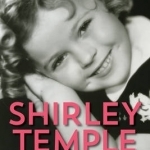
Shirley Temple: American Princess
Book
At the age of five, Shirley Temple became the world's most famous and acclaimed child-the most...
BookInspector (124 KP) rated Madam Tulip and the Knave of Hearts (Madam Tulip, #2) in Books
Sep 24, 2020
For more reviews please visit https://bbookinspector.wordpress.com
This book is a second part in Madam Tulip series, and normally, the first part is the one to wow readers to come back for more, but in this case, the second part was way better for me than the first one.
The first part was more of an introduction to Madam Tulip and what she is capable of, in this part things get more serious. Another difference was that, the first part was more like cosy mysteries; the second one loses its coziness and is more action filled, and more intense. Once again, Ahern chose his characters very skillfully. We have some which are incredibly eccentric and real personalities, and others, who are down to earth and very realistic. I honestly do not know how Ahern done his research for his books, but the details about royalty, elegance, old historical houses were a true pleasure to read about. Moreover, the details about historical house and laws of royal inheritance were really accurate and incredibly believable, so, well done to the author.
The narrative was once again told from Derry’s perspective, and in this book I was missing multiple perspectives, as I believe, it helps to understand other characters way better. I really enjoyed that Ahern played with this narrative more, incorporating different approaches in Derry’s life (working for her mom). In this novel there was less of Madam Tulip herself, and more of Derry and her bad luck to end up in dangerous situations. Another well done to the author for increasing the level of action in this novel, I really enjoyed unexpected turns and unusual places chosen for it. One thing what left me debating with myself was the “bad guy” in this book, he was very well picked, but at the same time very obvious and predictable. Even though this book is a second part in the series, it can easily be a standalone mystery, because Ahern explained everything a “new reader” needs to know.
The writing style of this book changed as well. It is more skillful and there are more difficult terms used in this novel, but it did not make it difficult to read, it just felt richer. The chapters are decent length, and once again, divided into smaller parts. I was little bit disappointed with the ending of this book, author used the same technique as in first book and it does not leave me satisfied. I WANT JUSTICE!!! :) So, to conclude, I was really amused with this book and I do recommend to give it a go. It left me very pleasantly surprised with more action, aristocratic and incredibly complex and entertaining characters, the interesting secrets, findings, and incredibly annoying and horrible Derry’s mom (can’t stand that woman now).
Was given this book by author for honest review.
This book is a second part in Madam Tulip series, and normally, the first part is the one to wow readers to come back for more, but in this case, the second part was way better for me than the first one.
The first part was more of an introduction to Madam Tulip and what she is capable of, in this part things get more serious. Another difference was that, the first part was more like cosy mysteries; the second one loses its coziness and is more action filled, and more intense. Once again, Ahern chose his characters very skillfully. We have some which are incredibly eccentric and real personalities, and others, who are down to earth and very realistic. I honestly do not know how Ahern done his research for his books, but the details about royalty, elegance, old historical houses were a true pleasure to read about. Moreover, the details about historical house and laws of royal inheritance were really accurate and incredibly believable, so, well done to the author.
The narrative was once again told from Derry’s perspective, and in this book I was missing multiple perspectives, as I believe, it helps to understand other characters way better. I really enjoyed that Ahern played with this narrative more, incorporating different approaches in Derry’s life (working for her mom). In this novel there was less of Madam Tulip herself, and more of Derry and her bad luck to end up in dangerous situations. Another well done to the author for increasing the level of action in this novel, I really enjoyed unexpected turns and unusual places chosen for it. One thing what left me debating with myself was the “bad guy” in this book, he was very well picked, but at the same time very obvious and predictable. Even though this book is a second part in the series, it can easily be a standalone mystery, because Ahern explained everything a “new reader” needs to know.
The writing style of this book changed as well. It is more skillful and there are more difficult terms used in this novel, but it did not make it difficult to read, it just felt richer. The chapters are decent length, and once again, divided into smaller parts. I was little bit disappointed with the ending of this book, author used the same technique as in first book and it does not leave me satisfied. I WANT JUSTICE!!! :) So, to conclude, I was really amused with this book and I do recommend to give it a go. It left me very pleasantly surprised with more action, aristocratic and incredibly complex and entertaining characters, the interesting secrets, findings, and incredibly annoying and horrible Derry’s mom (can’t stand that woman now).
Was given this book by author for honest review.
Sophia (Bookwyrming Thoughts) (530 KP) rated Siege and Storm in Books
Jan 23, 2020
I have completely mixed feelings about Leigh Bardugo's <i>Shadow and Bone trilogy.</i> So mixed, I was scared of reading <i>Siege and Storm</i>, despite the fact the librarian pretty much promised the entire series gets better by the book.
The second book in the <i>Grisha Trilogy</i> is certainly better than <i><a href="https://bookwyrmingthoughts.com/review-shadow-and-bone-by-leigh-bardugo/"; target="_blank" rel="noopener">Shadow and Bone</a></i> – whereas Alina Starkov (aka Sun Summoner) was overly mopey for a good part of the first book (to the point where I started calling her Mopey), Alina is less mopey this time around. A fantastic turnaround, because I don't think I can handle Starkov being mopey for two books. Instead, our fabulous Sun Summoner "Saint" is a little more... overconfident. Spunky (but that's what I've always like about Alina). And definitely in control of the situation, even if it's not in her favor and there are unpleasant rumors about her floating among the Grisha and everyone else.
But even though Alina is in control of the situation for the most part, there's somehow not a love triangle, but a love <i>square</i> surrounding Saint Sun Summoner.
Boy #1 (Mal): My least favorite corner, Mal wasn't a terrible character back in <i>Shadow and Bone</i> – I actually liked Mal a little. I particularly liked his interactions and dialogue with Alina. In the sequel though... he turns into Adrian Ivashkov 1.0 (HOPEFULLY 1.0).
Boy #2 (Darkling): I shipped Alina and the Darkling back in book one... until the end. The Darkling doesn't grace us readers in <i>Siege and Storm</i> as much as he does in <i>Shadow and Bone,</i> but he's really just that one desperate dude with the way he constantly tells Alina that there's no else like them and that they "belong together."
Boy #3 (Nikolai): My third least favorite corner (aka my favorite corner), despite the fact Nikolai is probably going to end up as one of my favorite characters in the entire trilogy after I read <i>Ruin and Rising</i>. Nikolai's two things: arrogant and adorable. Arrogant because seeing as he's royalty, he'll obviously have a big head of sorts (but not too big). Adorable because of his conversations and dialogue with Alina – I pretty much ship them... even if Nikolai probably likes her for political purposes.
The world building, as it was in the first, is spectacular – Imperial Russia spectacularized into fantasy. The concept is phenomenal and a fantastic pitch – even though I have mixed feelings about the entire series altogether, the <i>Grisha Trilogy</i> definitely deserves the hype and praise.
The trilogy so far is essentially Alina running, getting caught, and running again (with attacks and whatnot in between) – if that's the case for the first and second book, I'm definitely scared of reading the last book now. It could go extremely ugly – down the rabbit hole – or extremely well – mind = blown.
<a href="https://bookwyrmingthoughts.com/review-siege-and-storm-by-leigh-bardugo/"; target="_blank">This review was originally posted on Bookwyrming Thoughts</a>
The second book in the <i>Grisha Trilogy</i> is certainly better than <i><a href="https://bookwyrmingthoughts.com/review-shadow-and-bone-by-leigh-bardugo/"; target="_blank" rel="noopener">Shadow and Bone</a></i> – whereas Alina Starkov (aka Sun Summoner) was overly mopey for a good part of the first book (to the point where I started calling her Mopey), Alina is less mopey this time around. A fantastic turnaround, because I don't think I can handle Starkov being mopey for two books. Instead, our fabulous Sun Summoner "Saint" is a little more... overconfident. Spunky (but that's what I've always like about Alina). And definitely in control of the situation, even if it's not in her favor and there are unpleasant rumors about her floating among the Grisha and everyone else.
But even though Alina is in control of the situation for the most part, there's somehow not a love triangle, but a love <i>square</i> surrounding Saint Sun Summoner.
Boy #1 (Mal): My least favorite corner, Mal wasn't a terrible character back in <i>Shadow and Bone</i> – I actually liked Mal a little. I particularly liked his interactions and dialogue with Alina. In the sequel though... he turns into Adrian Ivashkov 1.0 (HOPEFULLY 1.0).
Boy #2 (Darkling): I shipped Alina and the Darkling back in book one... until the end. The Darkling doesn't grace us readers in <i>Siege and Storm</i> as much as he does in <i>Shadow and Bone,</i> but he's really just that one desperate dude with the way he constantly tells Alina that there's no else like them and that they "belong together."
Boy #3 (Nikolai): My third least favorite corner (aka my favorite corner), despite the fact Nikolai is probably going to end up as one of my favorite characters in the entire trilogy after I read <i>Ruin and Rising</i>. Nikolai's two things: arrogant and adorable. Arrogant because seeing as he's royalty, he'll obviously have a big head of sorts (but not too big). Adorable because of his conversations and dialogue with Alina – I pretty much ship them... even if Nikolai probably likes her for political purposes.
The world building, as it was in the first, is spectacular – Imperial Russia spectacularized into fantasy. The concept is phenomenal and a fantastic pitch – even though I have mixed feelings about the entire series altogether, the <i>Grisha Trilogy</i> definitely deserves the hype and praise.
The trilogy so far is essentially Alina running, getting caught, and running again (with attacks and whatnot in between) – if that's the case for the first and second book, I'm definitely scared of reading the last book now. It could go extremely ugly – down the rabbit hole – or extremely well – mind = blown.
<a href="https://bookwyrmingthoughts.com/review-siege-and-storm-by-leigh-bardugo/"; target="_blank">This review was originally posted on Bookwyrming Thoughts</a>

Over Edit & Add Text to Photos
Photo & Video and Entertainment
App
With Over, choose from millions of images, graphics and fonts to overlay, add and edit text and...

Little Princess Coloring Book!
Education and Games
App
~~> An enchanting, sparkling and interactive experience fit for Royalty ~~> 150+ beautiful...
Kyera (8 KP) rated Of Fire and Stars (Of Fire and Stars #1) in Books
Feb 1, 2018
Of Fire and Stars is a tale of magic, romance, and treachery. The story is told through alternating points of view, Mare is the princess of Mynaria and sister to Thandi the future King while Denna is a princess of Havemont and future wife of Thandi. Although Mare is royalty, she does not enjoy her crown choosing to spend her time in the stables and wishing she could live her own life. Denna has been trained and taught her entire life to be worthy of the arranged marriage that is her future. That is what is expected of her and all she knows.
Forced to adjust to a life at court, Denna finds herself in riding lessons with Mare in preparation for her wedding. Having never ridden a horse before she is concerned but puts her all into learning, which impresses the recalcitrant Mare. Their interactions and friendship grow over the course of the novel in a believable way, from the initial opinions of dislike to a true, bonded friendship. Although Denna is betrothed, her feelings only grow for Mare until her every thought is of the princess rather than the prince. Mare dismays each time she thinks about her brother marrying Denna, as he doesn't realize her best qualities. Each fears that her feelings are not reciprocated and keep everything bottled up. Whether their tale has a happy ending or not, you won't know unless you read the book. I really enjoyed the relationships and interactions in this book, particularly a romance that is more diverse than we normally get to see.
The world-building could have been better in this novel, but it is not non-existent. There are a variety of different lands and people mentioned, unfortunately, we only receive the barest of information. Even though one of our main characters is from another land, we learn about little more than their harsh winters. The magic system and other lands like Zumorda were so fascinating, but not explored. While some of this can be explained by the fact that our characters also seem to be ill-informed about their neighbors, we don't receive much more information about Mynaria and that's where this book takes place.
I found the main characters to be relatable but didn't connect deeply with some of the secondary ones. That was disappointing because it meant when there was an emotional scene or death, as a reader you weren't torn apart by it. To be honest, I didn't have opinions or feelings about it at all and I wish that were not the case. I love when books sweep you up, heart and soul, making you a part of the story and tearing out your emotions with every line.
Magic is feared and punished in Mynaria, so we sadly don't get to experience much of it. When we see experienced practitioners perform, it is fascinating and varied. Someone with an air affinity might be able to create a breeze but they also may be able to transform into a bird. I wish this magic system was more developed and/or explained more because I just want to know more.
Overall, I enjoyed this book and would recommend it to young adult/teen readers who enjoy magic, fantasy, romance, or more diverse books.
Forced to adjust to a life at court, Denna finds herself in riding lessons with Mare in preparation for her wedding. Having never ridden a horse before she is concerned but puts her all into learning, which impresses the recalcitrant Mare. Their interactions and friendship grow over the course of the novel in a believable way, from the initial opinions of dislike to a true, bonded friendship. Although Denna is betrothed, her feelings only grow for Mare until her every thought is of the princess rather than the prince. Mare dismays each time she thinks about her brother marrying Denna, as he doesn't realize her best qualities. Each fears that her feelings are not reciprocated and keep everything bottled up. Whether their tale has a happy ending or not, you won't know unless you read the book. I really enjoyed the relationships and interactions in this book, particularly a romance that is more diverse than we normally get to see.
The world-building could have been better in this novel, but it is not non-existent. There are a variety of different lands and people mentioned, unfortunately, we only receive the barest of information. Even though one of our main characters is from another land, we learn about little more than their harsh winters. The magic system and other lands like Zumorda were so fascinating, but not explored. While some of this can be explained by the fact that our characters also seem to be ill-informed about their neighbors, we don't receive much more information about Mynaria and that's where this book takes place.
I found the main characters to be relatable but didn't connect deeply with some of the secondary ones. That was disappointing because it meant when there was an emotional scene or death, as a reader you weren't torn apart by it. To be honest, I didn't have opinions or feelings about it at all and I wish that were not the case. I love when books sweep you up, heart and soul, making you a part of the story and tearing out your emotions with every line.
Magic is feared and punished in Mynaria, so we sadly don't get to experience much of it. When we see experienced practitioners perform, it is fascinating and varied. Someone with an air affinity might be able to create a breeze but they also may be able to transform into a bird. I wish this magic system was more developed and/or explained more because I just want to know more.
Overall, I enjoyed this book and would recommend it to young adult/teen readers who enjoy magic, fantasy, romance, or more diverse books.
